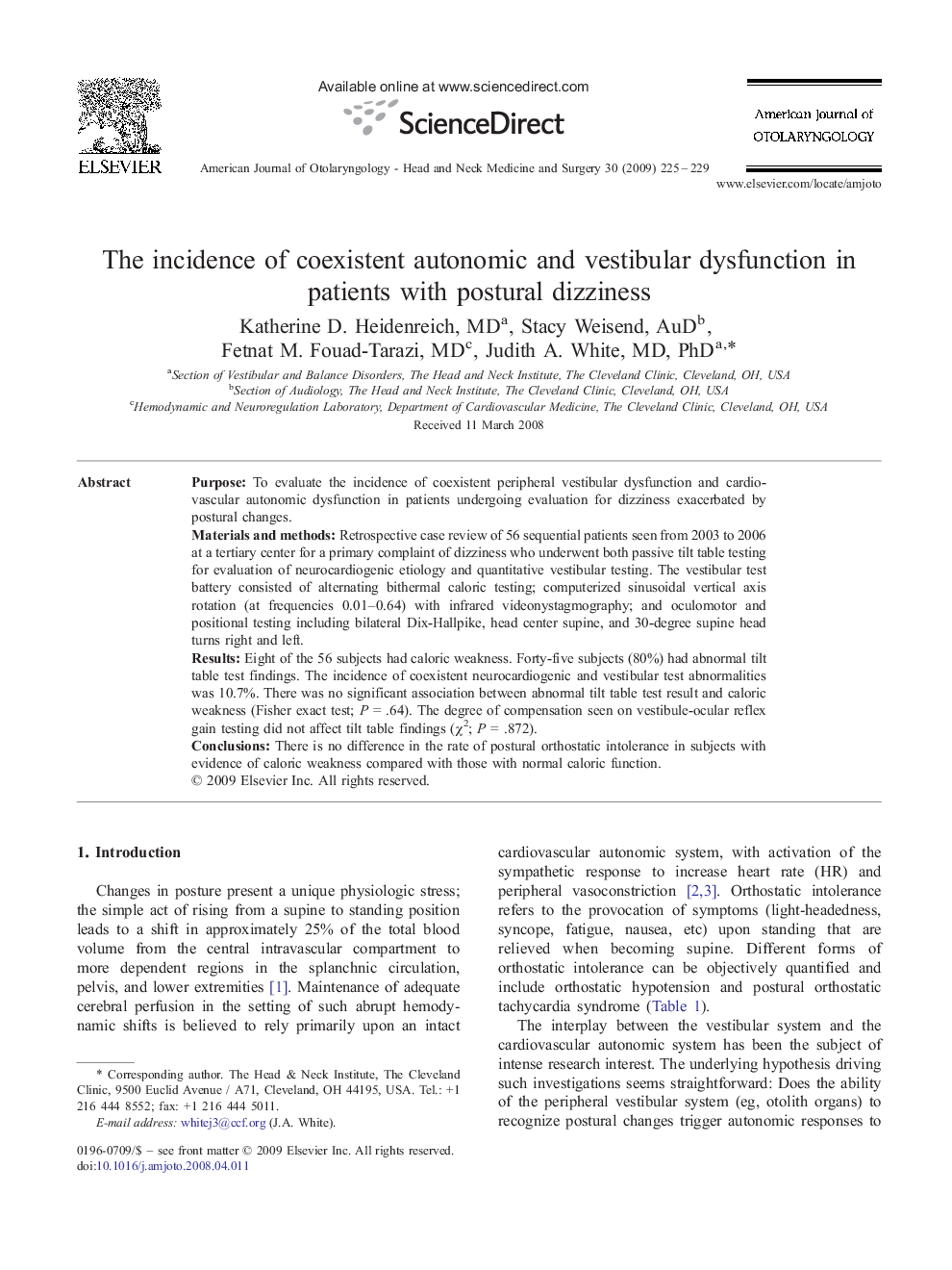| Article ID | Journal | Published Year | Pages | File Type |
|---|---|---|---|---|
| 4104224 | American Journal of Otolaryngology | 2009 | 5 Pages |
PurposeTo evaluate the incidence of coexistent peripheral vestibular dysfunction and cardiovascular autonomic dysfunction in patients undergoing evaluation for dizziness exacerbated by postural changes.Materials and methodsRetrospective case review of 56 sequential patients seen from 2003 to 2006 at a tertiary center for a primary complaint of dizziness who underwent both passive tilt table testing for evaluation of neurocardiogenic etiology and quantitative vestibular testing. The vestibular test battery consisted of alternating bithermal caloric testing; computerized sinusoidal vertical axis rotation (at frequencies 0.01–0.64) with infrared videonystagmography; and oculomotor and positional testing including bilateral Dix-Hallpike, head center supine, and 30-degree supine head turns right and left.ResultsEight of the 56 subjects had caloric weakness. Forty-five subjects (80%) had abnormal tilt table test findings. The incidence of coexistent neurocardiogenic and vestibular test abnormalities was 10.7%. There was no significant association between abnormal tilt table test result and caloric weakness (Fisher exact test; P = .64). The degree of compensation seen on vestibule-ocular reflex gain testing did not affect tilt table findings (χ2; P = .872).ConclusionsThere is no difference in the rate of postural orthostatic intolerance in subjects with evidence of caloric weakness compared with those with normal caloric function.
